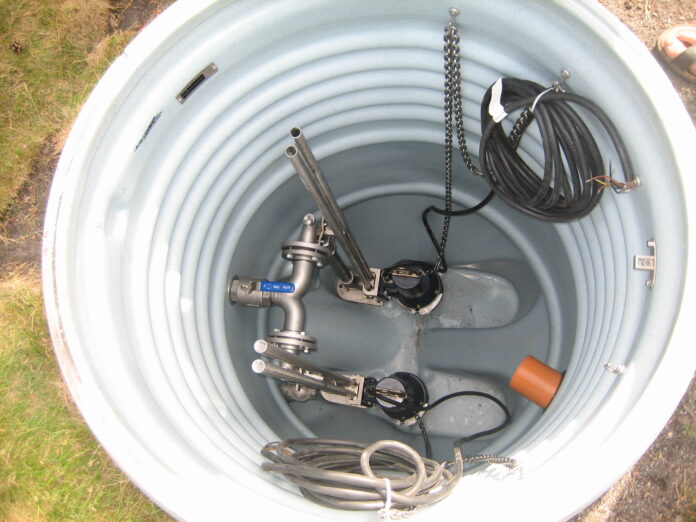A sump pump that fails during a torrential downpour is the last thing any homeowner wants. The use of sump pumps is essential in order to avoid flooded basements, extensive water damage, and expensive repair costs. If your pump has reached the end of its lifespan, there are a number of warning signs. Maintaining your sump pump’s performance will let you know when it’s time for a new one before being woken up in the middle of the night with a flooded basement.
Sump pump replacement
It is recommended to replace sump pumps every 7 to 10 years. Sump pumps older than that would require a lot of repair work and would have less return on investment than a replacement. Sump pumps’ life is affected by how often they’re used, how long their cycles last, and how much water they need to dispense. Make sure your sump pump isn’t overextended by running continuously so that you can extend its lifespan. A sump pump whose age or condition is not known should likely be replaced, or at the very least have an inspection, service, and cleaning performed by a plumber.
Sump pump replacement is necessary for homeowners with a basement or crawl space vulnerable to water damage. A sump pump is a device that pumps excess water from a sump basin to prevent basement flooding. Over time, sump pumps can wear out or become damaged, leading to a need for replacement.
Sump pump replacement is typically a straightforward process that can be performed by a professional plumber or handy homeowner. When choosing a replacement sump pump, it’s important to consider factors such as flow rate, power source, and durability. Some popular options include submersible sump pumps, designed to operate underwater, and pedestal sump pumps, which sit above the water level in the sump basin.
A properly functioning sump pump is essential to a home’s flood prevention system. Regular sump pump replacement can ensure that your home stays dry and protected from water damage.
Is it necessary to have a backup sump pump?
If your power goes out in the midst of a heavy storm, having a backup pump allows you to avoid costly repairs and costly damage. When your primary sump pump stops working, your backup sump pump kicks in. When the primary pump fails, the backup pump activates, pushing out the incoming water. Any home with a sump pump used to prevent flooding would be wise to have a backup sump pump. Despite being brand new and in good working order, your sump pump can become ineffective if there is a power outage. They protect against the staggering losses associated with flooding at a low cost.
Backup sump pumps are usually powered by batteries. The backup sump pump is usually installed with your main sump pump. When a power outage prevents your sump pump from functioning, its battery power kicks into action. You should set the float switch of the backup sump pump above the float switch of your primary sump pump. In this way, the backup sump pump can detect when the water level has risen above the desired level and activate accordingly. Backup pumps not only prevent damage to your home in the event of a pump failure, but they also help in times of extreme flooding. During serious storms, your primary pump may not be able to handle the volume of water. It can provide extra relief to the primary sump pump if the water rises high enough to activate the backup pump.
A back-up battery can also be wired directly into your existing sump pump. You can attach a backup battery directly to your primary sump pump and mount it on the wall of your basement. The pump will remain working even if the electricity goes out in your home since the battery will provide power. Be sure to regularly check the battery’s life and replace it when necessary if you install the backup battery directly onto the pump. People also use a sump pump wired directly to a generator in case of power outages, so that their basement stays dry even without power.
Read More: Brake Rotors: A Complete Guide About How Long Do Brake Rotors Last?
It is important to keep in mind that backup sump pumps should only be used in an emergency. It is never a good idea to use them in lieu of your actual sump pump. Up to 5-7 hours of continuous operation can be obtained from a backup sump pump. You can use the battery-operated backup pump for 24 hours or more of the runtime is intermittent.
When should you replace your sump pump?
It is best to monitor the performance of your sump pump in order to determine if it is time to replace it. Some problems can be addressed by simple maintenance or replacement parts, whereas other problems are more severe and require a sump pump system replacement. When you pay attention to the duration and frequency of the sump pump’s cycles, the performance of the motor, and the amount of water in the basin, you can tell when it is time to replace it.
Sump pumps are most active in the spring and summer when frequent downpours follow snowmelt. Typical exclusions from homeowner policies apply to water that enters or overflows sump pumps. Frequently, a separate insurance rider for sump pump failure is required. You may have to purchase it separately from the National Flood Insurance Program. The endorsement often covers slump pump failure, power outages, and a pu
1. A constant stream of water in the basin.
This is a serious indicator that something is wrong with your sump pump if it continues to run no matter the weather or the level of water. An excessive strain is placed on the pump’s motor when the sump pump continues to run after all the water has been pumped out. Without water, the pump will quickly overheat if it is operating without cooling. You will become overextended to the point that your pump will prematurely fail if this problem persists. Sump pumps overwork for a variety of reasons, including overloading.
Improper sump pump sizing is one of the leading causes of perpetually running pumps. You will find that a pump that is too small for your basin will struggle to move the water, as it will be unable to handle the volume of water. The pump will have to work hard if the water fills the basin too quickly, and it will run dry if the water fills the basin too fast.
2. A loud noise coming from the sump pump
It is an indication that you have a problem with your sump pump if your pump is making loud gurgling, clanging, or rattling noises. Despite the fact that you can expect a pump to make noises as it pulls water up out of the discharge pipe, you shouldn’t expect your pump to roar at you from your basement. Sump pumps of higher quality tend to make less noise when they’re operating. In general, older sump pumps tend to be louder, especially those made from PVC or plastic.
Unusually loud sump pump motors indicate the motor is nearing the end of its lifespan. Buying a new system is a good idea if you have an old, plastic pump. Upgrade to a cast-iron pump with self-lubricating bearings. These pumps require less maintenance and are more reliable. A cast-iron pump will also last longer because it is less likely to overheat.
FAQs
- What should the cost of replacing a sump pump be?
Average costs for replacing a pedestal sump pump are between $400 and $900. Replace a submersible sump pump for an average cost of $1,400, ranging from $800 to $2,000 on the high end.
- Will I be able to replace the sump pump on my own?
It’s a DIY project you can do if your sump pump fails and needs to be replaced.












